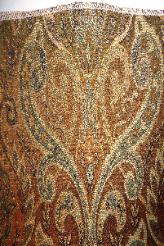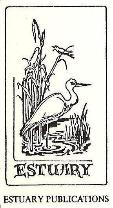A RUDE AWAKENING
Richmond, Virginia, 1971
I think it must have been my friend (now successful novelist), Rick who introduced me
to the daughter of the guy who owned the largest collection of contemporary
sculpture in the world…I’d assumed that she had seen my work and was eager to
meet the painter. So, before she arrived, I put in a stock of White Horse, because I’d
been told she drank scotch. I had 3 bottles proudly on display when she walked
through my door; all neatly lined up on the buffet, which I’d acquired when the
nunnery across the street got new furniture.
“What’s this?” she asked picking up one of the bottles.
“Scotch. For you (my love). I heard that you drink scotch.”
“This?” she snorted disdainfully, “I wouldn’t drink this stuff.”
“Oh. Uh…” I stammered. I was at a loss. “What…uh…?”
“Chivas or better,” she said flatly.
“Well, gee, I spent every penny I had on this stuff.”
“I’ll buy the scotch, just don’t expect me to drink this.” She eyed the label with an
aristocratic mix of disgust and amusement.
So, that was my mistake.
Her mistake was telling me that she could make me the next Larry Poons.
“It is literally within my grasp to make you famous,” she assured me. “I could do that. I
could make you the next Larry Poons.”
She meant it too. She rattled off the names of all the people she knew who would
have a hand in making me the next Larry Poons: gallery owners and patrons and art
critics. They were all her friends and all positioned nicely in the Fine Art world. I’d
heard those names before, or had seen them in print in Art Forum. It was an
impressive list. Oh, and, of course she also knew the writers who contrived the
intellectual justification for almost any act that any artist of their choosing might
commit. She was certainly the right chick in the right place to make all my little
painterly dreams come true.
And it made me sick; certainly sicker than she would have been had she stooped to
sip a little White Horse.
Her response to being offered cheap scotch was nothing compared to my most-high
umbrage at being offered a lift up into the real world of Contemporary Art. I was
disgusted to think that, through her connections, I could become the next big New
York success story. I don’t know what response she expected, but she wasn’t getting
it. She must have wondered about my intelligence while she waited.
After a very long delay, I whined, “I want to make it because my work speaks to the
viewer.”
“What?” she laughed crassly. She almost collapsed under the monumental naiveté of
that statement. She needed to lean on me to keep from falling down with laughter. I
can still feel her hand on my arm as she reached out to steady herself.
“What are you talking about?” she snorted. “Painting doesn’t have ANYthing to do
with that!”
She looked at me to see if I was serious, and, when she discovered that I was, she
laughed again.
I felt as if I’d been dragged out to sea and abandoned. I felt desperate and more than
a little lost.
Still, I managed to cough up a measured response.
“If that’s the way it’s done,” I told her quite seriously, “I want nothing to do with it.”
I made this declaration chin up, eyes cast heavenward, from which I, in those days,
received my motivation, my inspiration, and since, every kick in the teeth, my failure,
my disgrace.
She threw herself on the couch and laid back, her head upon the arm, and closed
her eyes. It had been a long trip from New York to Richmond, and she wasn’t really in
the mood for this.
“Fine.” She sighed. “I’ll make some other guy the next Larry Poons.”
OK, so that was settled.
I don’t know what I was thinking. I guess I had never really given such matters any
thought. I mean, I had hoped that this daughter of the guy who owned the largest
collection of contemporary sculpture in the world WOULD, after a few days, depart
fully-determined to make me the next Larry Poons. In my heart I secretly held that
hope. But, I had assumed that would come about for nobler reasons—I wanted it to
happen because my work spoke to those people; those gallery owners, those
patrons, those art critics.
So, now, after more than forty years, I’ve managed to laugh it off. And all of my
paintings hang in the homes of people who know me and who really like my work.
None of them has ever paid a penny for any of those paintings that I can recall, they
were gifts. And at some point in time, I think each of these people has told me that
they believe I could make a living selling my work. They cannot understand why I don’
t simply do what’s necessary to make that happen. But much of what I do, and
especially my work as an artist, is either immediately understood or cannot be
explained.
Richard Mansfield
Richmond, Virginia, 1971
I think it must have been my friend (now successful novelist), Rick who introduced me
to the daughter of the guy who owned the largest collection of contemporary
sculpture in the world…I’d assumed that she had seen my work and was eager to
meet the painter. So, before she arrived, I put in a stock of White Horse, because I’d
been told she drank scotch. I had 3 bottles proudly on display when she walked
through my door; all neatly lined up on the buffet, which I’d acquired when the
nunnery across the street got new furniture.
“What’s this?” she asked picking up one of the bottles.
“Scotch. For you (my love). I heard that you drink scotch.”
“This?” she snorted disdainfully, “I wouldn’t drink this stuff.”
“Oh. Uh…” I stammered. I was at a loss. “What…uh…?”
“Chivas or better,” she said flatly.
“Well, gee, I spent every penny I had on this stuff.”
“I’ll buy the scotch, just don’t expect me to drink this.” She eyed the label with an
aristocratic mix of disgust and amusement.
So, that was my mistake.
Her mistake was telling me that she could make me the next Larry Poons.
“It is literally within my grasp to make you famous,” she assured me. “I could do that. I
could make you the next Larry Poons.”
She meant it too. She rattled off the names of all the people she knew who would
have a hand in making me the next Larry Poons: gallery owners and patrons and art
critics. They were all her friends and all positioned nicely in the Fine Art world. I’d
heard those names before, or had seen them in print in Art Forum. It was an
impressive list. Oh, and, of course she also knew the writers who contrived the
intellectual justification for almost any act that any artist of their choosing might
commit. She was certainly the right chick in the right place to make all my little
painterly dreams come true.
And it made me sick; certainly sicker than she would have been had she stooped to
sip a little White Horse.
Her response to being offered cheap scotch was nothing compared to my most-high
umbrage at being offered a lift up into the real world of Contemporary Art. I was
disgusted to think that, through her connections, I could become the next big New
York success story. I don’t know what response she expected, but she wasn’t getting
it. She must have wondered about my intelligence while she waited.
After a very long delay, I whined, “I want to make it because my work speaks to the
viewer.”
“What?” she laughed crassly. She almost collapsed under the monumental naiveté of
that statement. She needed to lean on me to keep from falling down with laughter. I
can still feel her hand on my arm as she reached out to steady herself.
“What are you talking about?” she snorted. “Painting doesn’t have ANYthing to do
with that!”
She looked at me to see if I was serious, and, when she discovered that I was, she
laughed again.
I felt as if I’d been dragged out to sea and abandoned. I felt desperate and more than
a little lost.
Still, I managed to cough up a measured response.
“If that’s the way it’s done,” I told her quite seriously, “I want nothing to do with it.”
I made this declaration chin up, eyes cast heavenward, from which I, in those days,
received my motivation, my inspiration, and since, every kick in the teeth, my failure,
my disgrace.
She threw herself on the couch and laid back, her head upon the arm, and closed
her eyes. It had been a long trip from New York to Richmond, and she wasn’t really in
the mood for this.
“Fine.” She sighed. “I’ll make some other guy the next Larry Poons.”
OK, so that was settled.
I don’t know what I was thinking. I guess I had never really given such matters any
thought. I mean, I had hoped that this daughter of the guy who owned the largest
collection of contemporary sculpture in the world WOULD, after a few days, depart
fully-determined to make me the next Larry Poons. In my heart I secretly held that
hope. But, I had assumed that would come about for nobler reasons—I wanted it to
happen because my work spoke to those people; those gallery owners, those
patrons, those art critics.
So, now, after more than forty years, I’ve managed to laugh it off. And all of my
paintings hang in the homes of people who know me and who really like my work.
None of them has ever paid a penny for any of those paintings that I can recall, they
were gifts. And at some point in time, I think each of these people has told me that
they believe I could make a living selling my work. They cannot understand why I don’
t simply do what’s necessary to make that happen. But much of what I do, and
especially my work as an artist, is either immediately understood or cannot be
explained.
Richard Mansfield

